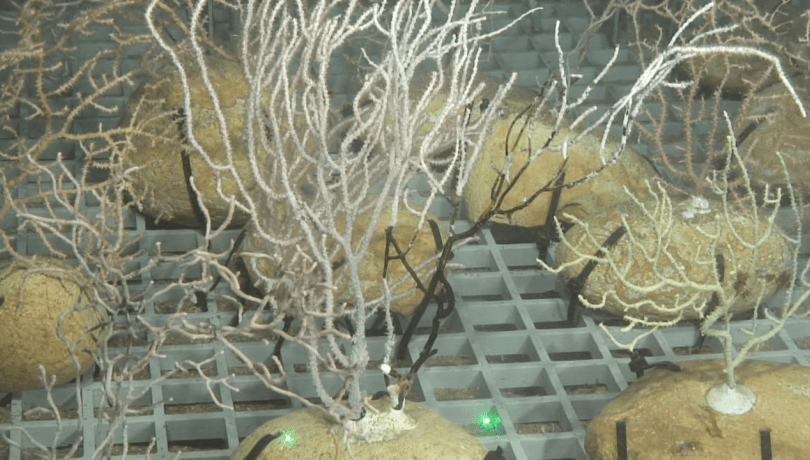Coordinated by the ICM-CSIC, the initiative will install an intelligent deep-sea observatory at 350 metres depth between Blanes and Palamós to monitor ecosystem recovery in real time.

The Institut de Ciències del Mar (ICM-CSIC) has launched SMART-ME, a pioneering project funded by the Spanish Ministry of Science, Innovation and Universities, that will establish one of the first permanent, intelligent observatories in Spain’s deep Mediterranean waters. The initiative aims to promote the recovery of exploited seabeds along the Catalan coast by combining cutting-edge marine robotics, artificial intelligence, and ecological research.
Specifically, SMART-ME (Smart Monitoring of Marine Ecosystems) will create OBSEA-DEEP, a distributed deep-sea observatory to be deployed at a depth of 350 metres on the upper slope of the Catalan margin, between Blanes and Palamós. This site lies within a newly designated no-take marine reserve, an area of high ecological value shaped by submarine canyons, rocky outcrops and soft sediment plains. The strategic location will allow scientists to monitor diverse habitats that play a crucial role in the recovery and resilience of Mediterranean ecosystems impacted by decades of human exploitation.
Permanent Monitoring
Unlike traditional deep-sea observatories, SMART-ME will rely on a network of autonomous robotic platforms that can communicate, cooperate, and transmit data in near real-time. These include multiparametric landers, autonomous underwater vehicles (AUVs), and acoustic tagging systems designed to monitor species movements, environmental conditions, and habitat changes.
Data will be periodically transmitted to the shore through pop-up buoys that surface to send stored information via satellite, ensuring continuous monitoring without the need for constant vessel presence. This innovative configuration will provide a steady stream of ecological data while reducing environmental impact and operational costs.
One of SMART-ME’s key innovations lies in mobility: landers equipped with variable buoyancy systems will be able to reposition themselves across the seafloor, overcoming the natural patchiness of deep-sea habitats and enabling observations to scale from local patches to whole ecosystems.
Marine Protected Areas Recovery
The project focuses on the newly established no-take marine reserves created through the ICATMAR co-management initiative, which brings together fishers, scientists and public administrations to promote sustainable fisheries. By monitoring these protected zones in unprecedented detail, SMART-ME will deliver high-resolution insights into species behaviour, habitat regeneration and ecosystem resilience—critical knowledge for guiding marine restoration and fisheries management.
“SMART-ME is smart because it learns and adapts,” explain Nixon Bahamón and Joan B. Company, the project coordinators at ICM-CSIC. “It won’t just collect data, but will also process and interpret them in near real time, turning raw images and acoustic signals into actionable ecological information that supports conservation and marine spatial planning.”
Research Lines
SMART-ME is structured around three complementary research components that combine ecology, robotics, and advanced communications. The first, SMART-ME ECOFISH, led by the ICM-CSIC, focuses on the ecological monitoring of deep-sea reserves and the development of new indicators to assess habitat recovery. Working in parallel, SMART-ME TECH, coordinated by the University of Girona (UdG), will enhance the autonomy of the Girona AUVs, allowing them to perform high-resolution surveys, detect and interact with landers, coordinate operations with an Autonomous Surface Vessel (ASV), and execute manipulation tasks such as data retrieval or equipment relocation. Finally, SMART-ME NET, led by the Polytechnic University of Catalonia (UPC-SARTI), will design and implement the communication and data infrastructure that ensures the seamless operation of OBSEA-DEEP as a connected, intelligent observatory.
These three strands will converge during a series of oceanographic campaigns in which the consortium will validate the project’s technological innovations. Among them are AI-based image recognition to identify marine fauna, autonomous acoustic tracking of species movements, and the long-term deployment of multiparametric landers capable of enduring the demanding conditions of the deep sea. Together, these advances will create a new framework for observing, understanding and ultimately supporting the recovery of deep-sea ecosystems.
“SMART-ME represents a unique opportunity to advance the next generation of underwater robotics,” says Narcís Palomeras, principal investigator from UdG. “Our AUVs will not only survey the seafloor but also interact with deployed landers to recover or reposition them, all coordinated from an ASV — this opens up an entirely new dimension in marine observation.”
“Our role at UPC-SARTI is to make sure all these platforms communicate reliably and that data flow seamlessly from the seafloor to the surface,” adds Daniel Mihai, lead researcher at UPC-SARTI. “A robust and autonomous network is essential to make OBSEA-DEEP a truly intelligent observatory.”
Deep-Sea Observation
By bringing together expertise in deep-sea ecology, sustainable fisheries, habitat restoration and marine technology, SMART-ME exemplifies a new model of collaboration between biologists and engineers. The project builds on decades of experience and partnership among ICM-CSIC, UdG and UPC-SARTI, laying the groundwork for a new generation of smart, autonomous deep-sea observatories.
With SMART-ME, Spain strengthens its leadership in marine research and contributes directly to the restoration and conservation of Mediterranean ecosystems, setting a global benchmark for intelligent ocean monitoring.